At 2 PM on January 25th, we caught a night bus from Shiraz, and 20 hours later, at 10 AM on January 26th, we arrived in Tabriz, a city in the far northwest corner of Iran. Tabriz is a long way out of the loop of Iran that we had been doing, but we wanted to experience a completely different part of the country as well as the “typical tourist route”, which we had mostly been following thus far.
Waking up an hour before arrival, I was surprised to see the ground covered in snow. Just 5 days earlier, we had been sweating in 25 degrees and extreme humidity on Qeshm Island in the very south of Iran, and now we were almost as far north as we could get, and freezing our butts off at 2 degrees. Also, it was nice to finally see some forrest! It was a welcome change from the endless deserts of central and southern Iran. The north was beautiful!
With 1,6 million inhabitants, Tabriz is the most populous city in the Iranian Azerbaijan area. The population consists mostly of Iranian Azerbaijanis and thus, the culture in Tabriz is quite different from the other cities that we visited in Iran, especially with the most spoken language being Azeri Turkish.
The city is located in the Quru River valley between volcanos and mountains, and lies at an elevation of 1,600 metres above sea level. This makes the city the most scenic of all that we’ve visited and also makes it my favourite! 😉
The Arg of Tabriz
After finding a cheap hotel and having a much needed shower, it was time for us to explore the city. We had a few sights that we wanted to see and started off by going to the Arg of Tabriz.
The Arg of Tabriz is the remnants of a large unfinished mausoleum from the 14th century and a military castle and barrack from the 19th century. The building of the original construction started in 1318, but ended in 1339 when the roof of the mausoleum collapsed. Five centuries later, during the fourth Russo-Persian War (1804-1813), the place was reconstructed as a military compound with a foundry factory for the manufacturing of cannons, a military headquarter, a barrack and a small palace being added to the original plan of the Arg.
During the 20th century, the arg was destroyed over several occasions, until the 1990s when the reconstruction and renovation of the arg began.
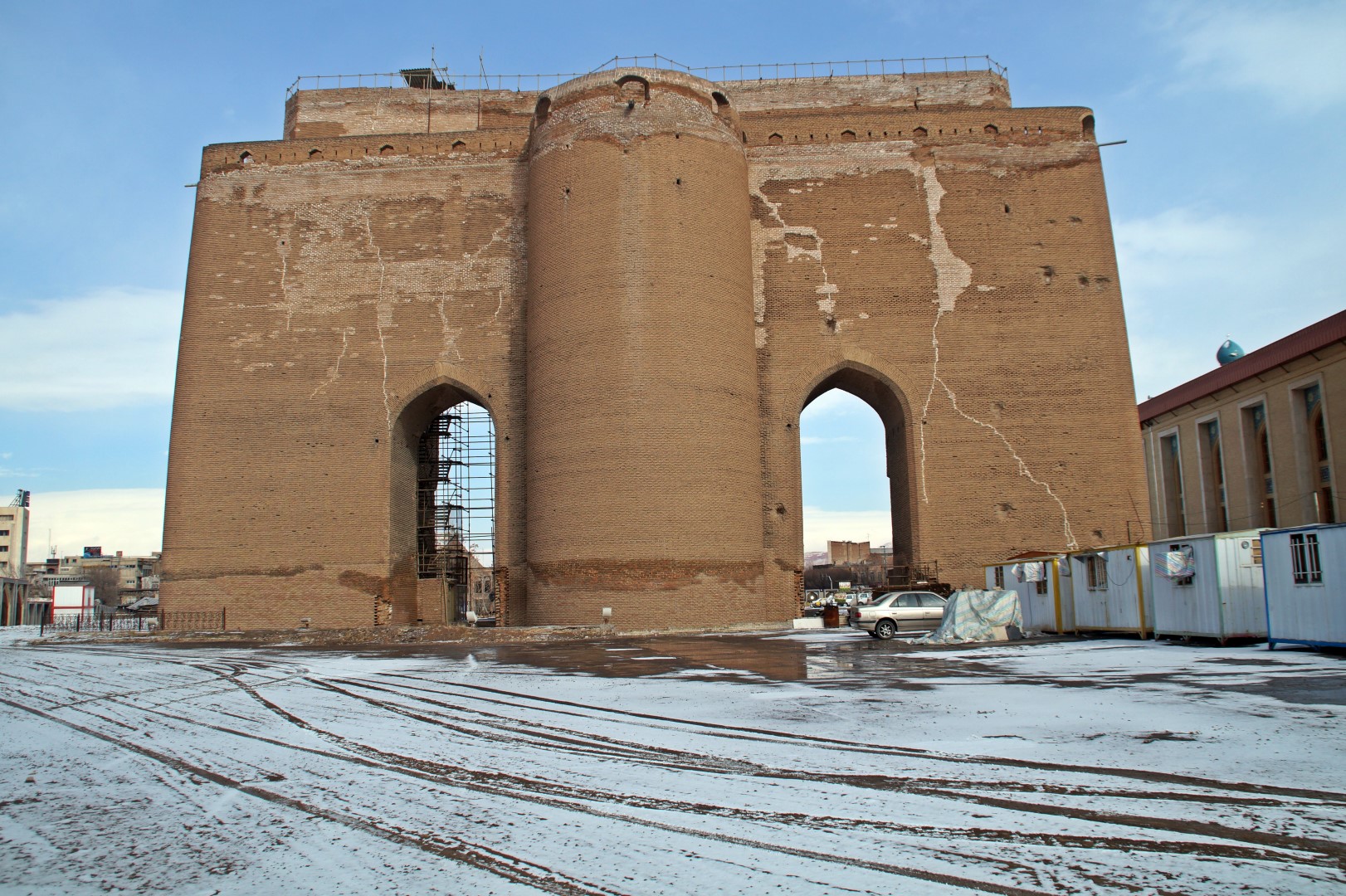
The beautiful Blue Mosque
We then walked to the historic Blue Mosque, which was constructed in 1465 upon the order of Jahan Shah, the ruler of Kara Koyunlu, a Shia Oghuz Turkic tribal federation that ruled over the territory comprising present-day Azerbaijan, Armenia, northwestern Iran, eastern Turkey and northeastern Iraq from 1375 to 1468. When the mosque was built, Tabriz was made the capital of Jahan Shah’s kingdom. He was later killed and buried inside the mosque. In 1780, the mosque was severely damaged in a major earthquake, and only the original entrance hall survived. The reconstruction began in 1973, but is yet to be completed.
There’s a beautiful park connected to the mosque, and on the day that we were there, there were cats running about everywhere! I was in heaven and spent ages stroking and playing with them! Just as we were about to leave the park, we saw a woman come in with bags full of dry cat food and meat. She gave it to the miawing cats and they had a feast! It was beautiful to see how well this local woman looked after the kitties and it totally melted my heart. Humanity can definitely be a beautiful thing!
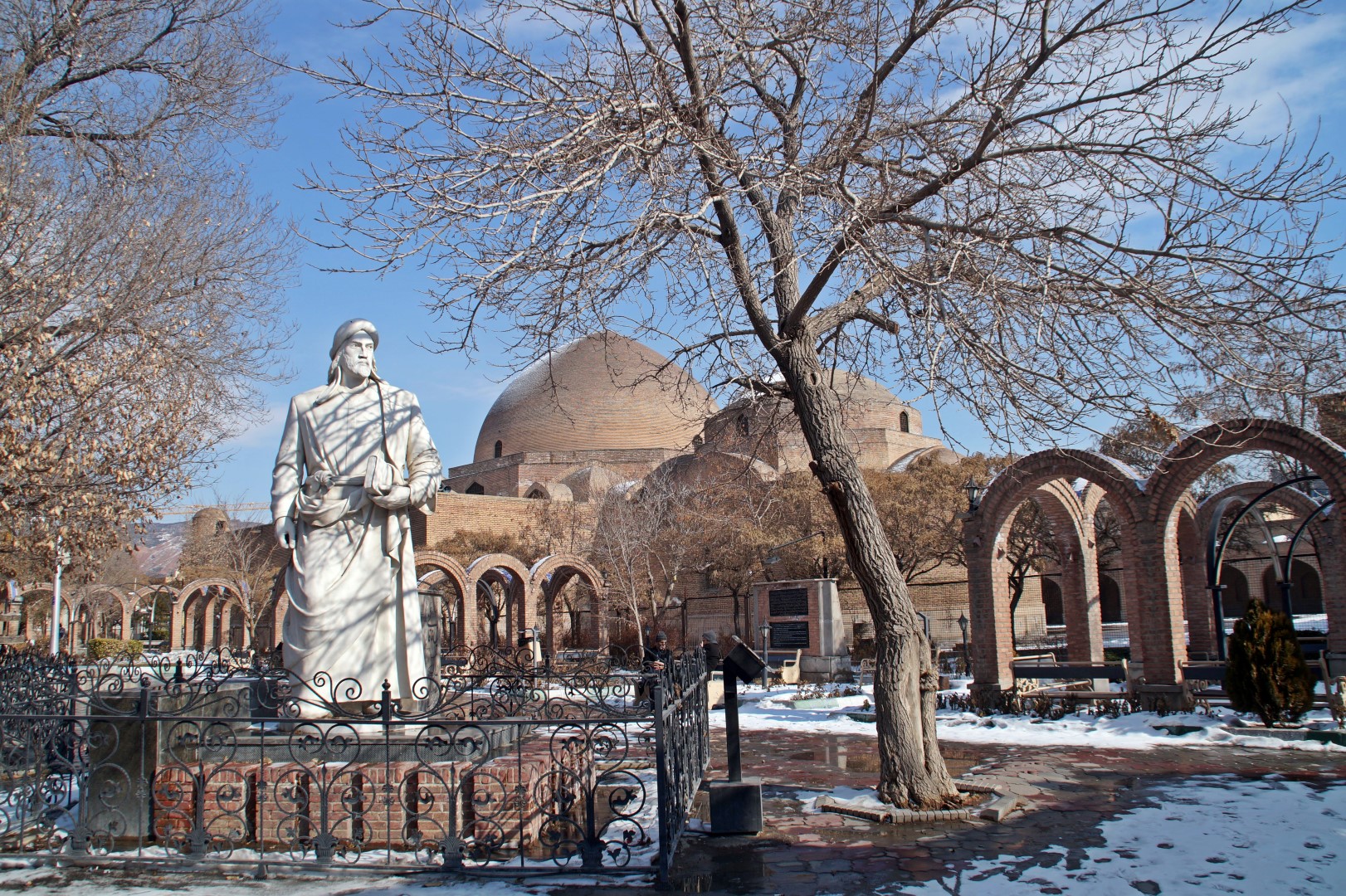
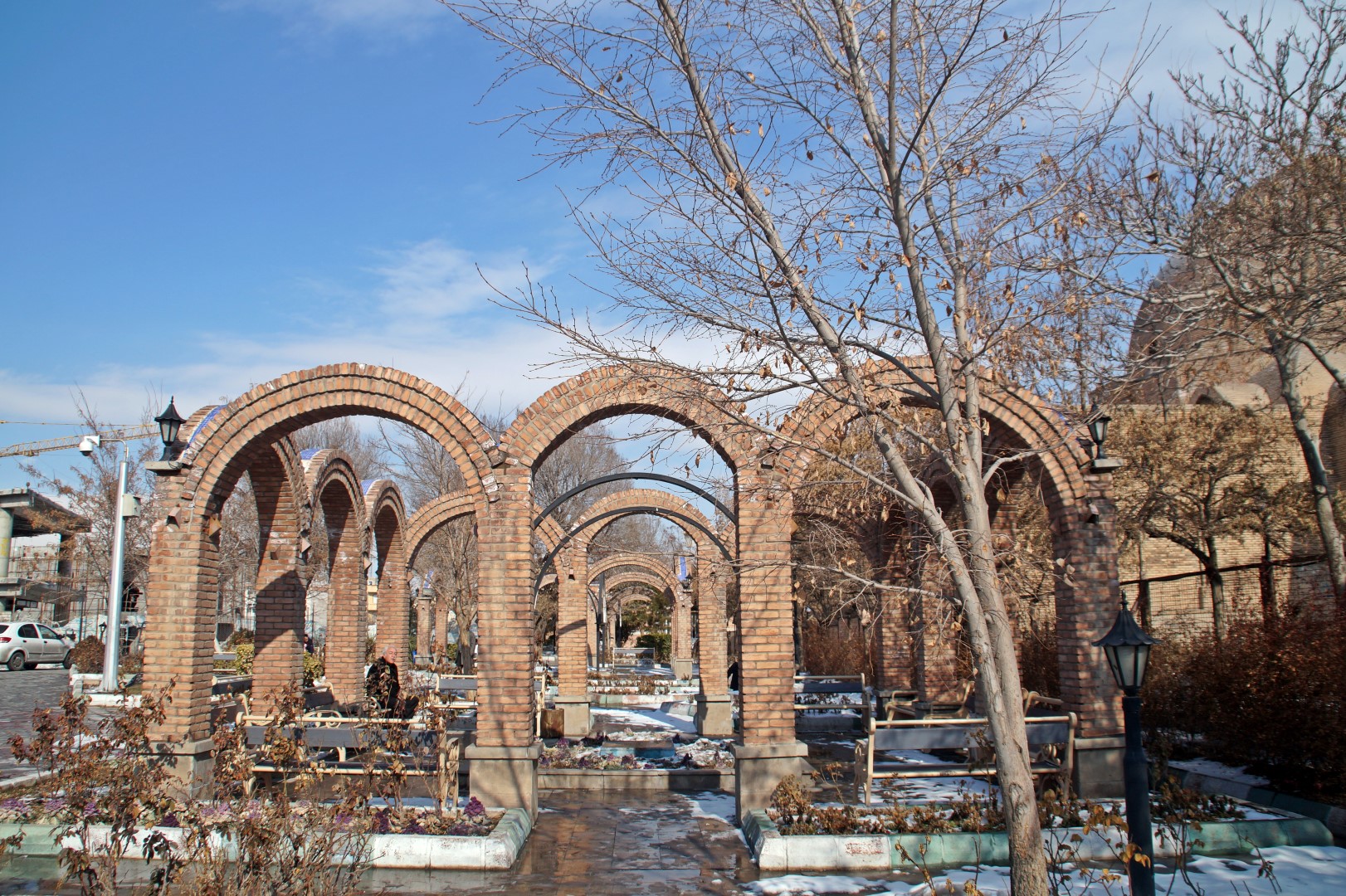
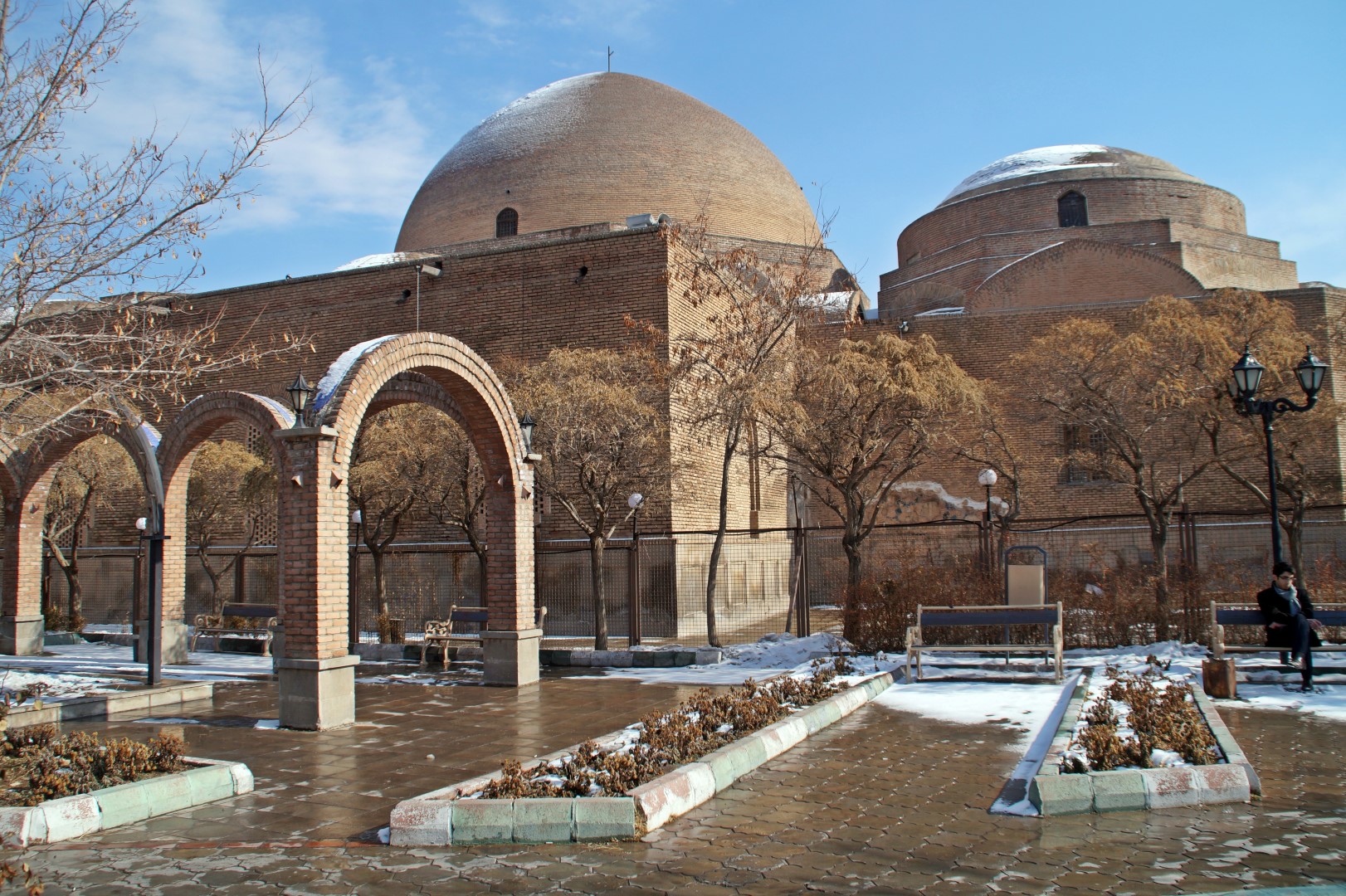
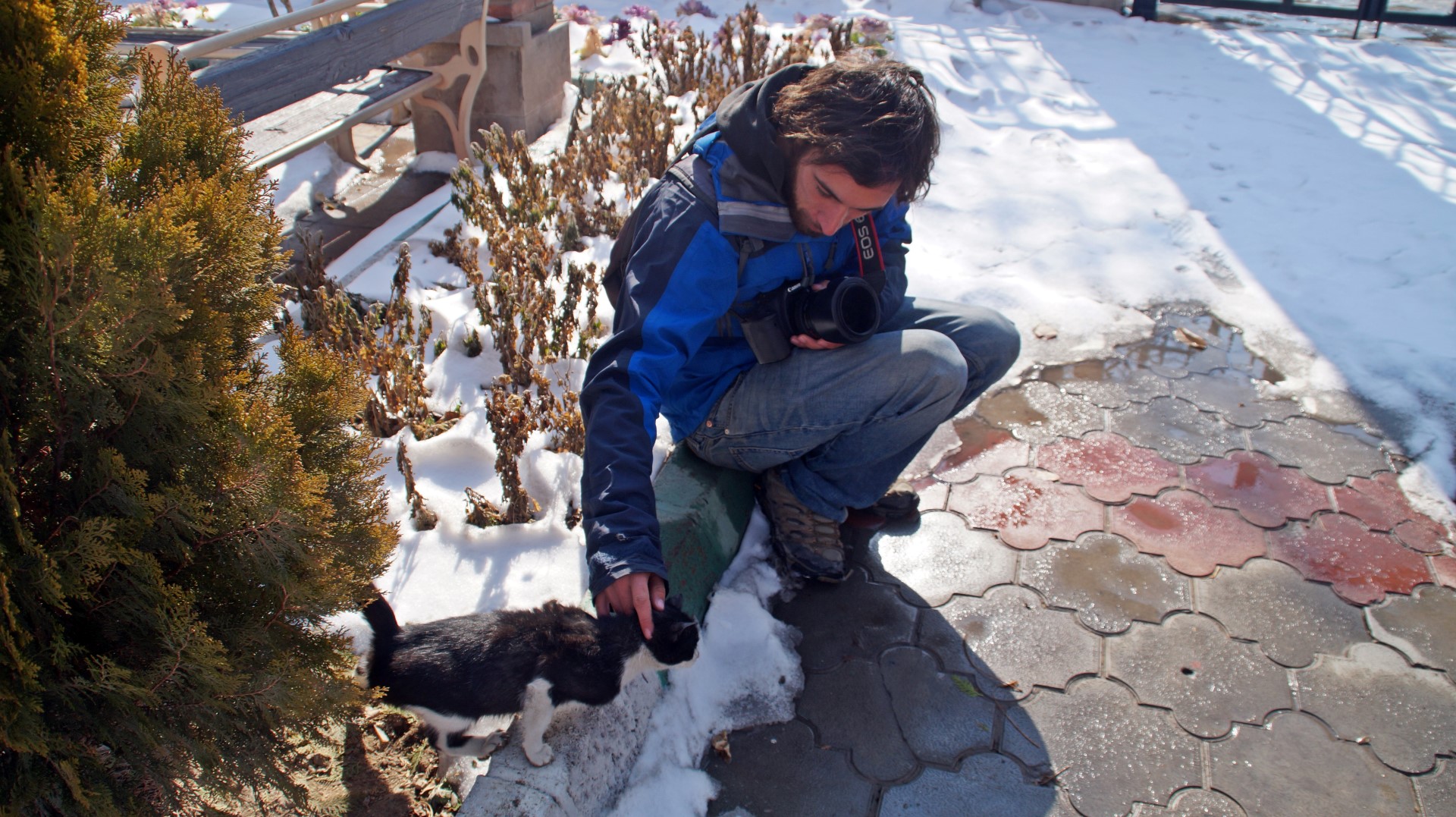
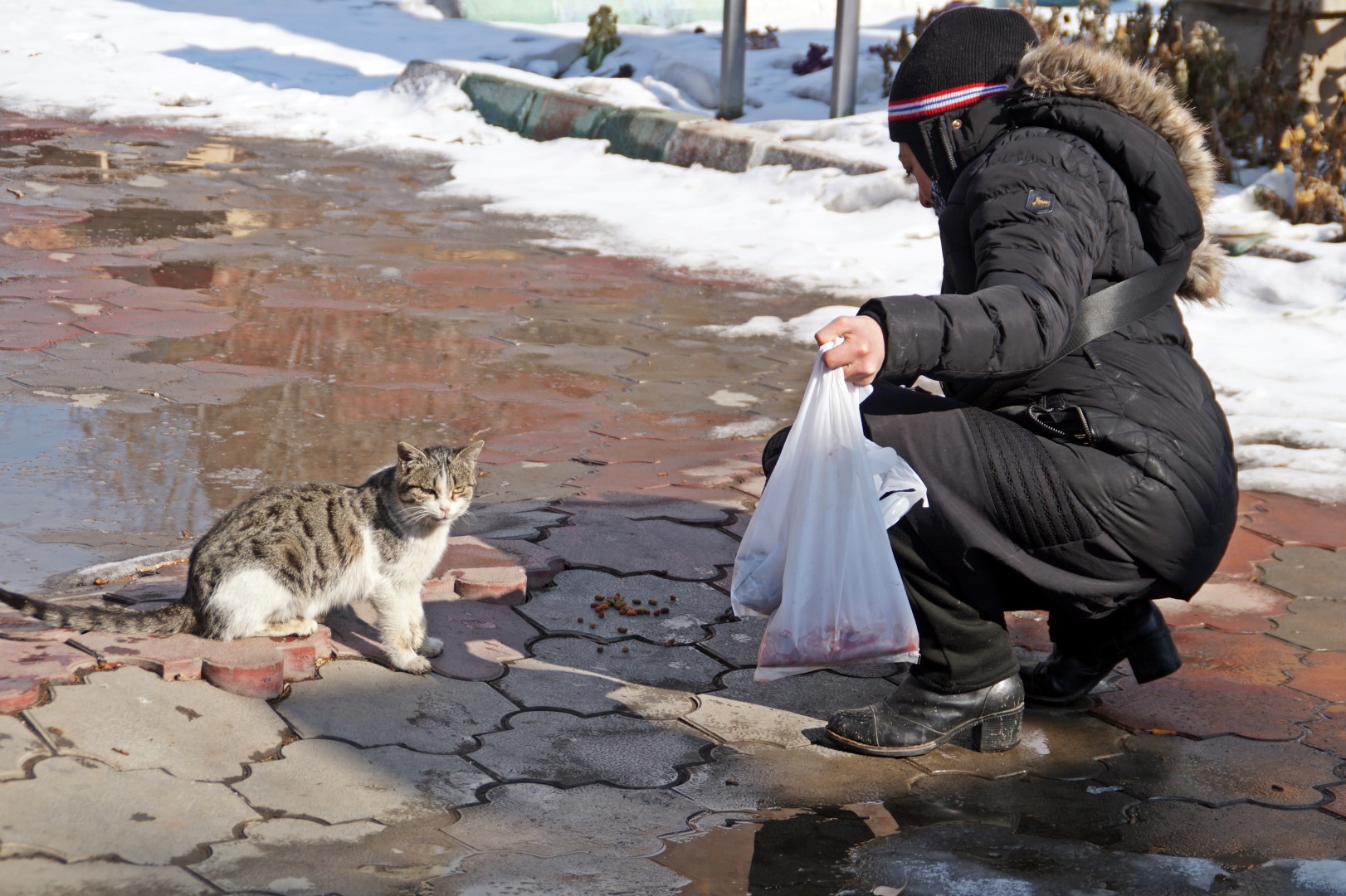
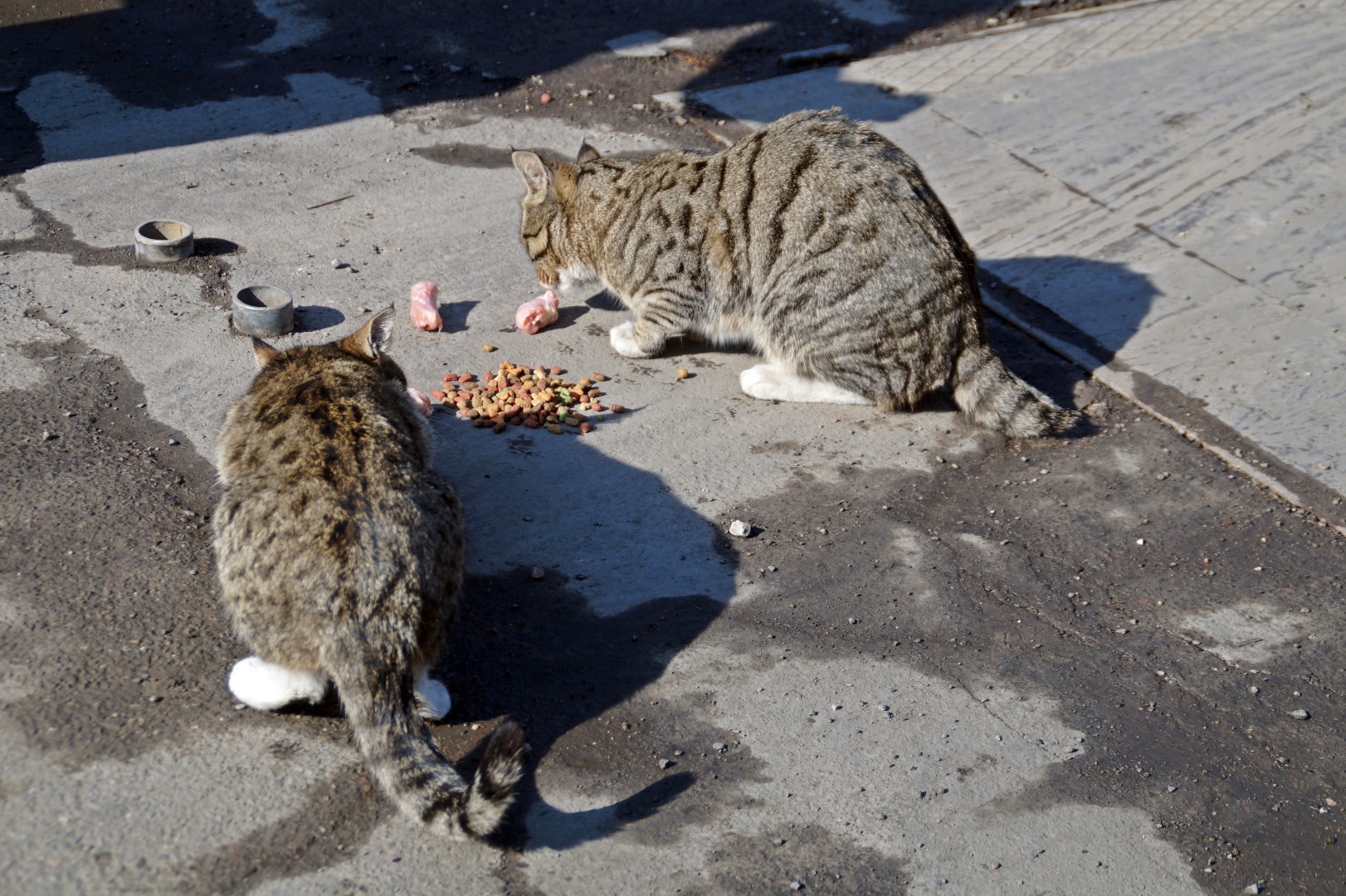

The historical bazaar of Tabriz
Afterwards, our legs transported us to the Bazaar of Tabriz, which is what Tabriz is famous for. The bazaar is one of the oldest bazaars in the Middle East and the largest covered bazaar in the world! The bazaar consists of many sub-bazaars, including a gold and jewellery bazaar, a carpet bazaar, a shoe bazaar, a food bazaar and many more. In July 2010, the Bazaar of Tabriz was inscribed as a World Heritage Site by UNESCO.
The bazaar is a maze, and if it had not been for a local guy, who we met at the entrance, we would’ve got lost and would probably still be in there, trying to find our way out! The local guy wanted to show us a part of the bazaar called Mozafar-je that he thought was specifically beautiful. Shortly after, he had to leave, but he told us to visit the Jameh Mosque, which we then did.
The Jameh Mosque is a large congregational mosque, which dates back more than 1000 years, but the precise date of construction is unknown, since most parts of the mosque were destroyed due to an earthquake in 1193. There is some evidence that shows that the foundation of the mosque is related to the Seljuq Empire (1037–1194), so my guess is that it was built during this period.
Walking back through the bazaar again, Steve and I bought a bunch of chocolates and other Iranian delicacies to bring back home to family and friends – and a few for ourselves, of course!
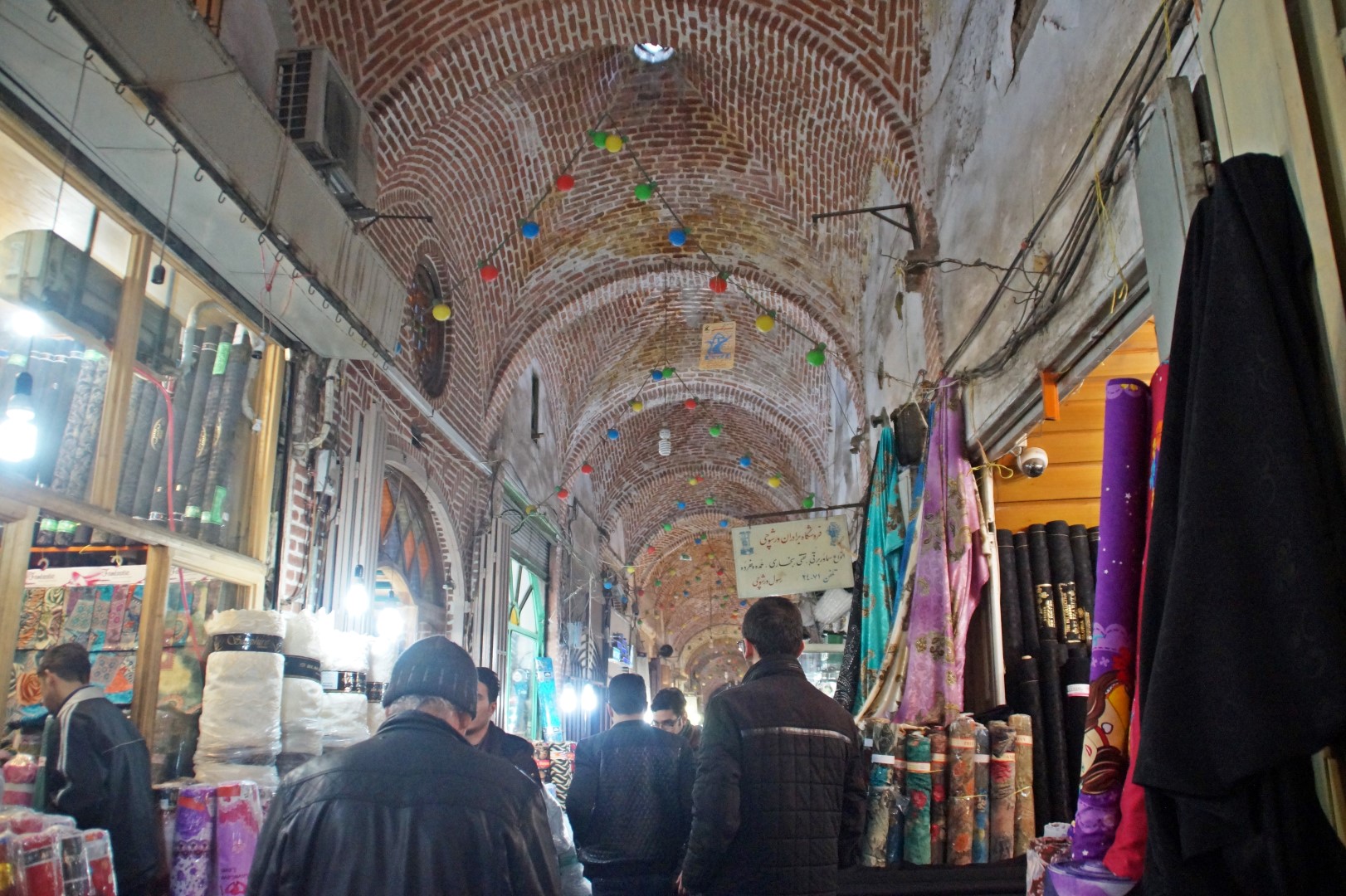
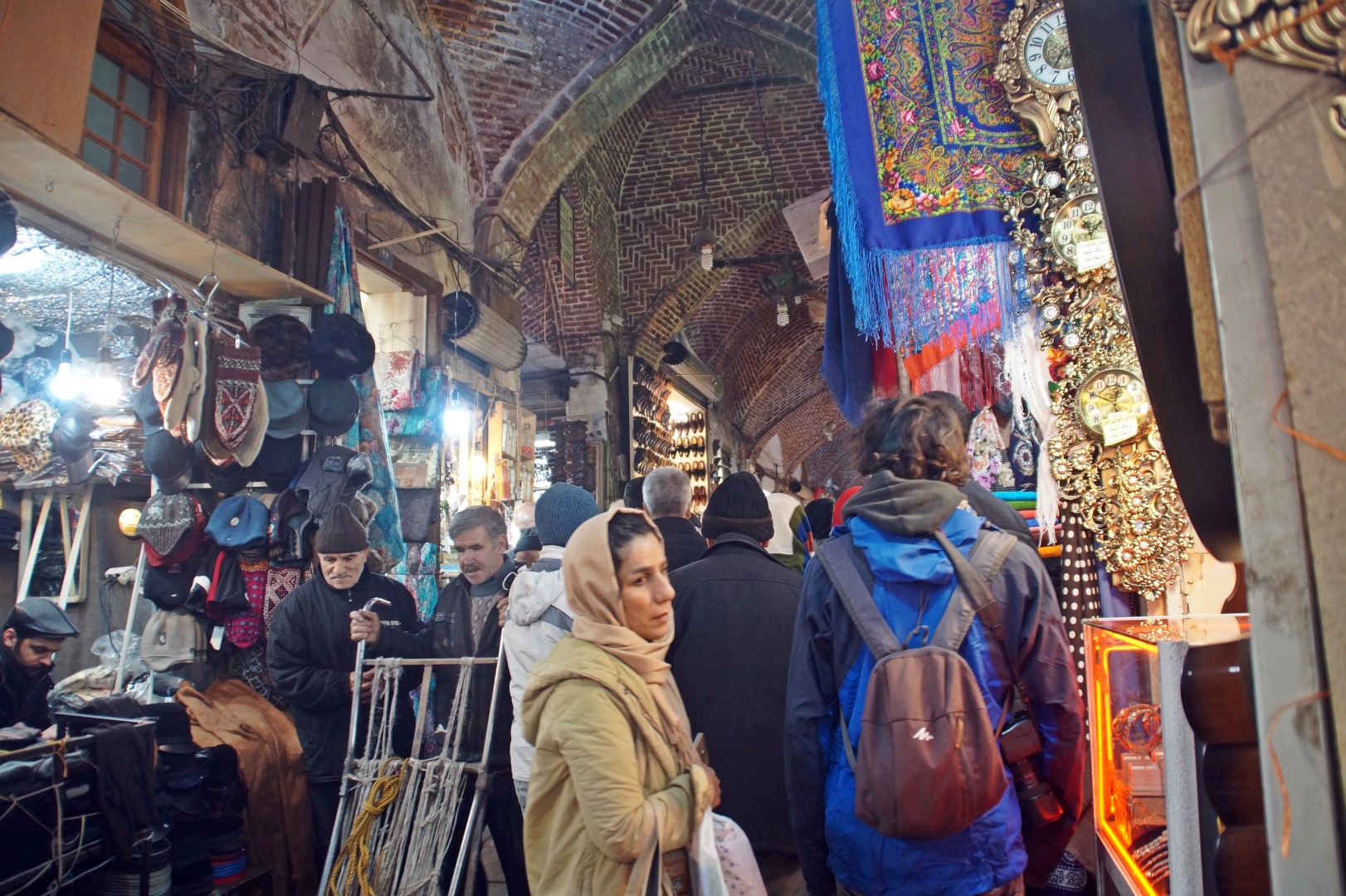

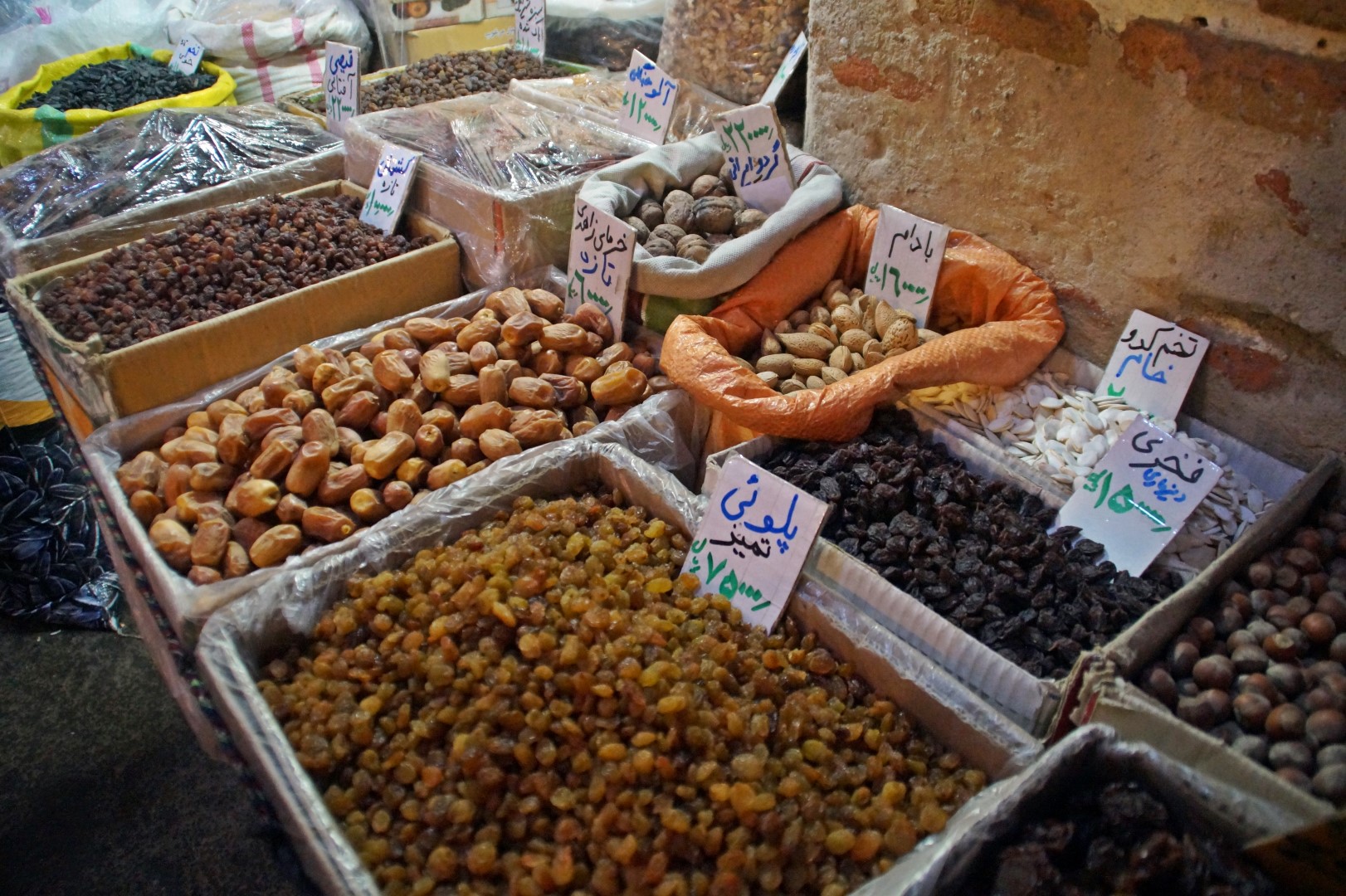

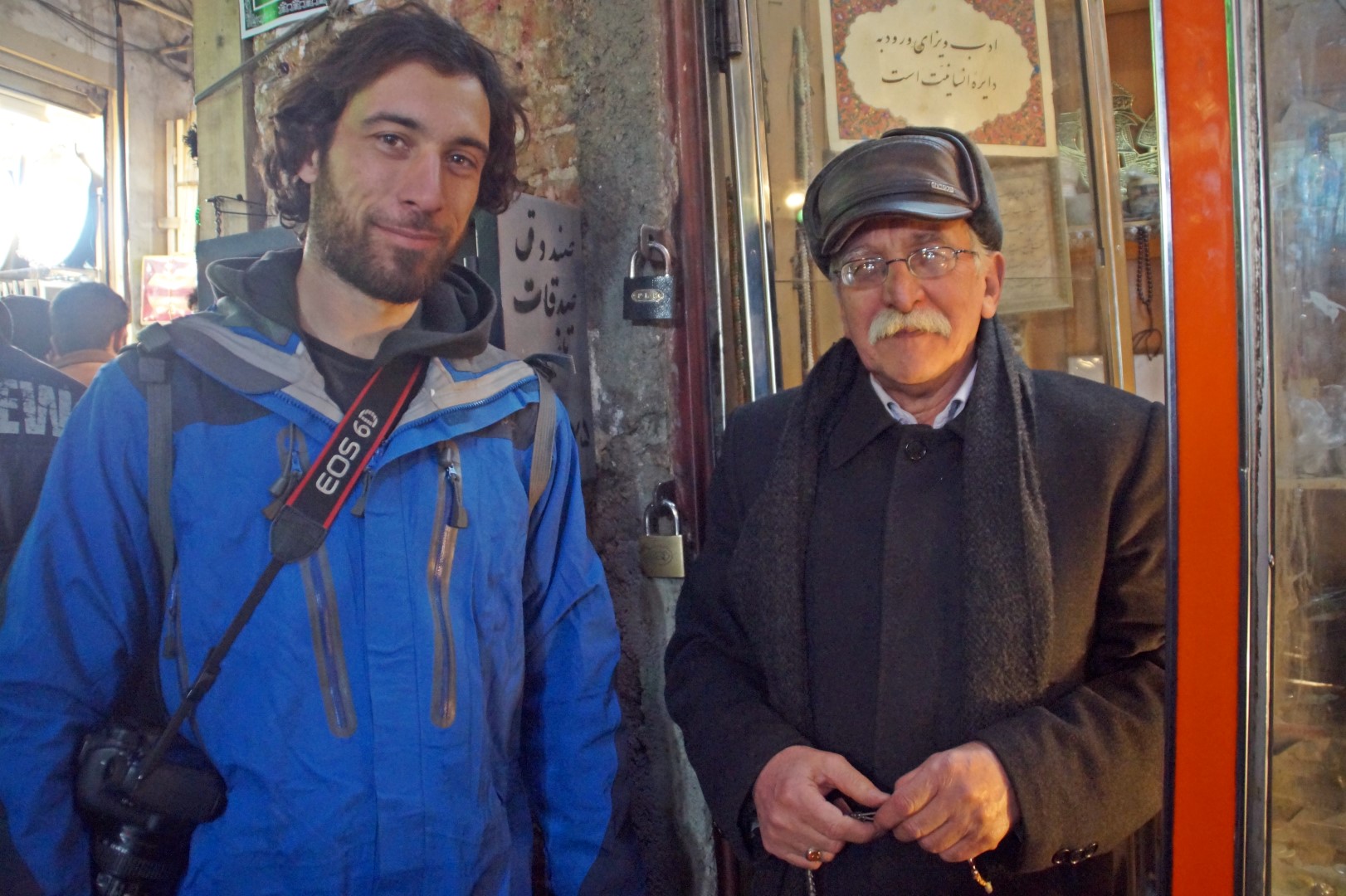
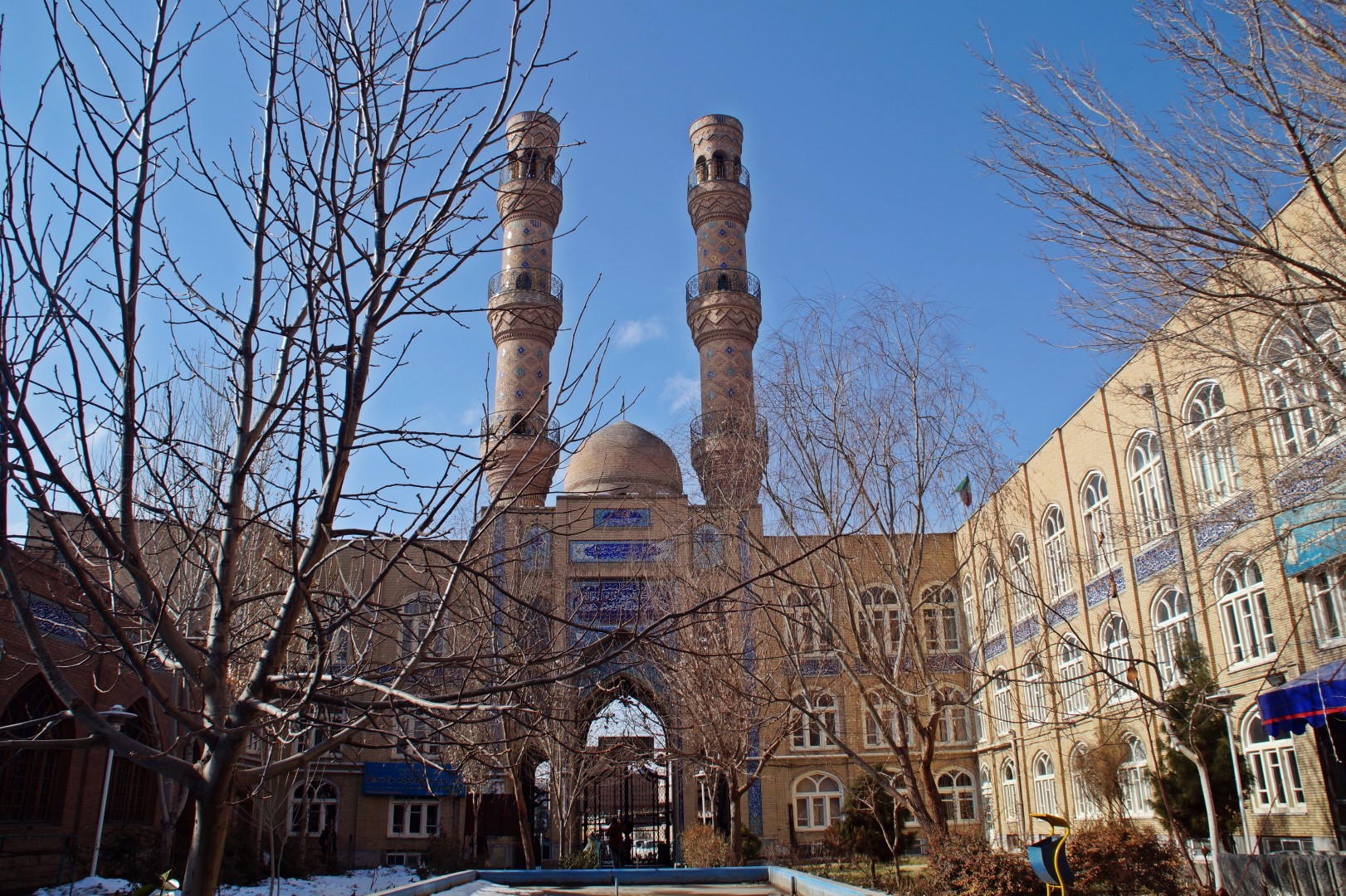
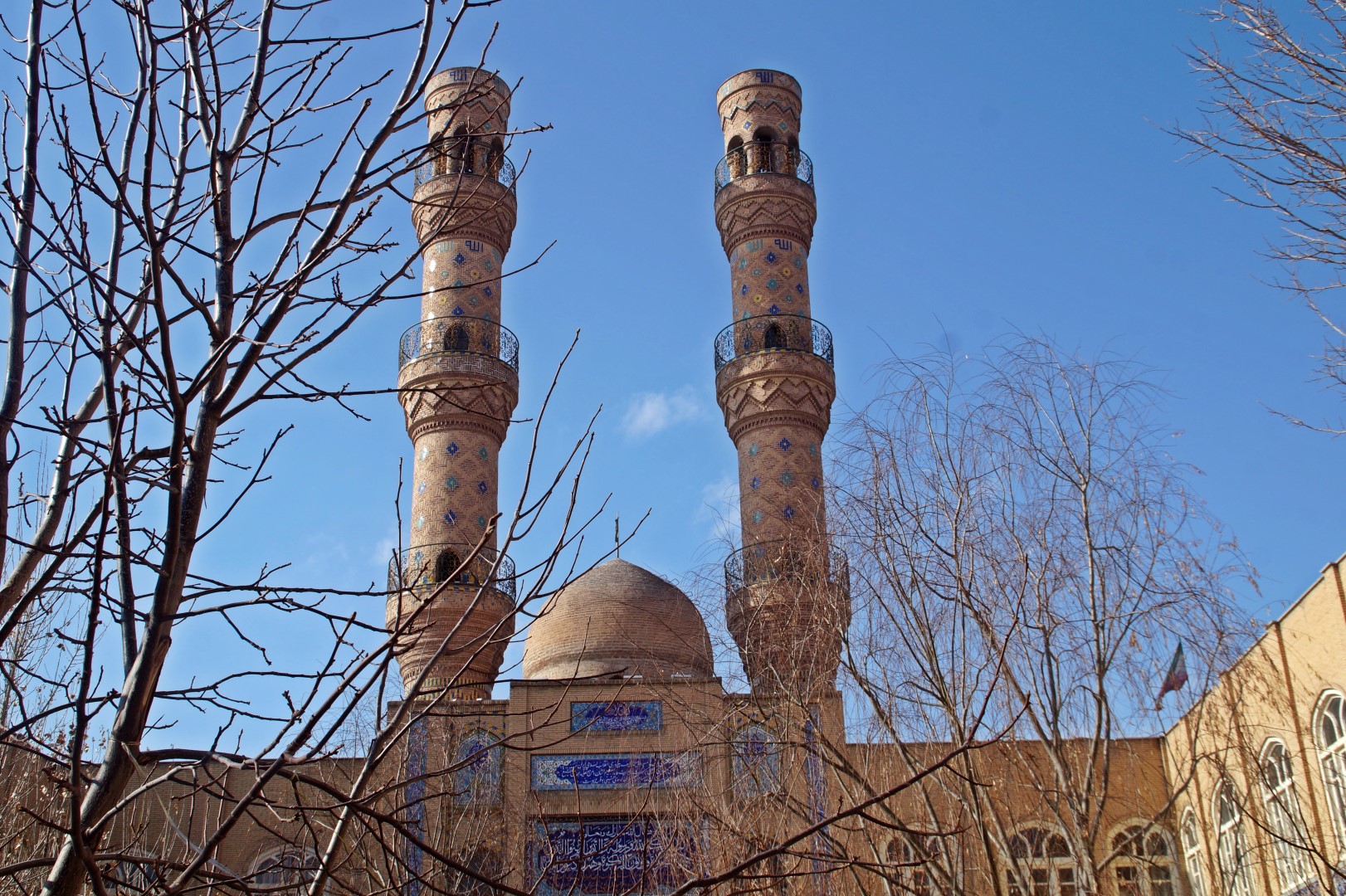
A scenic walk in Shah Goli Park
On our last day in Tabriz, we decided to sleep in and then head to Shah Goli in the afternoon. Shah Goli is a large park with a square artificial lake in the middle, and to the south there’s a high hill, from where the view of the city is absolutely amazing.
Shah Goli is located 11 km outside the city center, so we had to take a bus to reach it. I had to sit in the back with all the other women and Steve had to sit in the front with all the other men. I sat beside a local woman and her mother, and had a really interesting conversation with them. They were asking me all about how life in Denmark is, and asked if it’s really true that we’re free to do what we want, when we turn 18. The woman told me that she has to stay at her parents’ house until she gets married, and then she can move out with her husband. She also said that she didn’t like wearing the hijab, but that wearing it had become “a habit”. In Iran, it’s the law for women to wear the hijab, and I’m sure that many women would much rather go without. She also said that she was only muslim because of her parents. It made me sad to think what the women of Iran go through. In many cases, they aren’t able to decide for themselves, at least not as much as Western women can. Even if they aren’t muslim, they still have to wear the hijab. They have to follow the strict laws of the country, and while some are definitely fine with that, I would guess that the majority aren’t. Hopefully someday things will change and Iran will become more free and less oppressive towards women.
Steve also met a friend on the bus, and he decided to come along with us on our walk in the Shah Goli park. We spent about an hour in the snow-covered park, climbing the hill to get the most breathtaking view of Tabriz and the surrounding mountains, feeding a cute cat pizza, and drinking tea and eating popcorn.

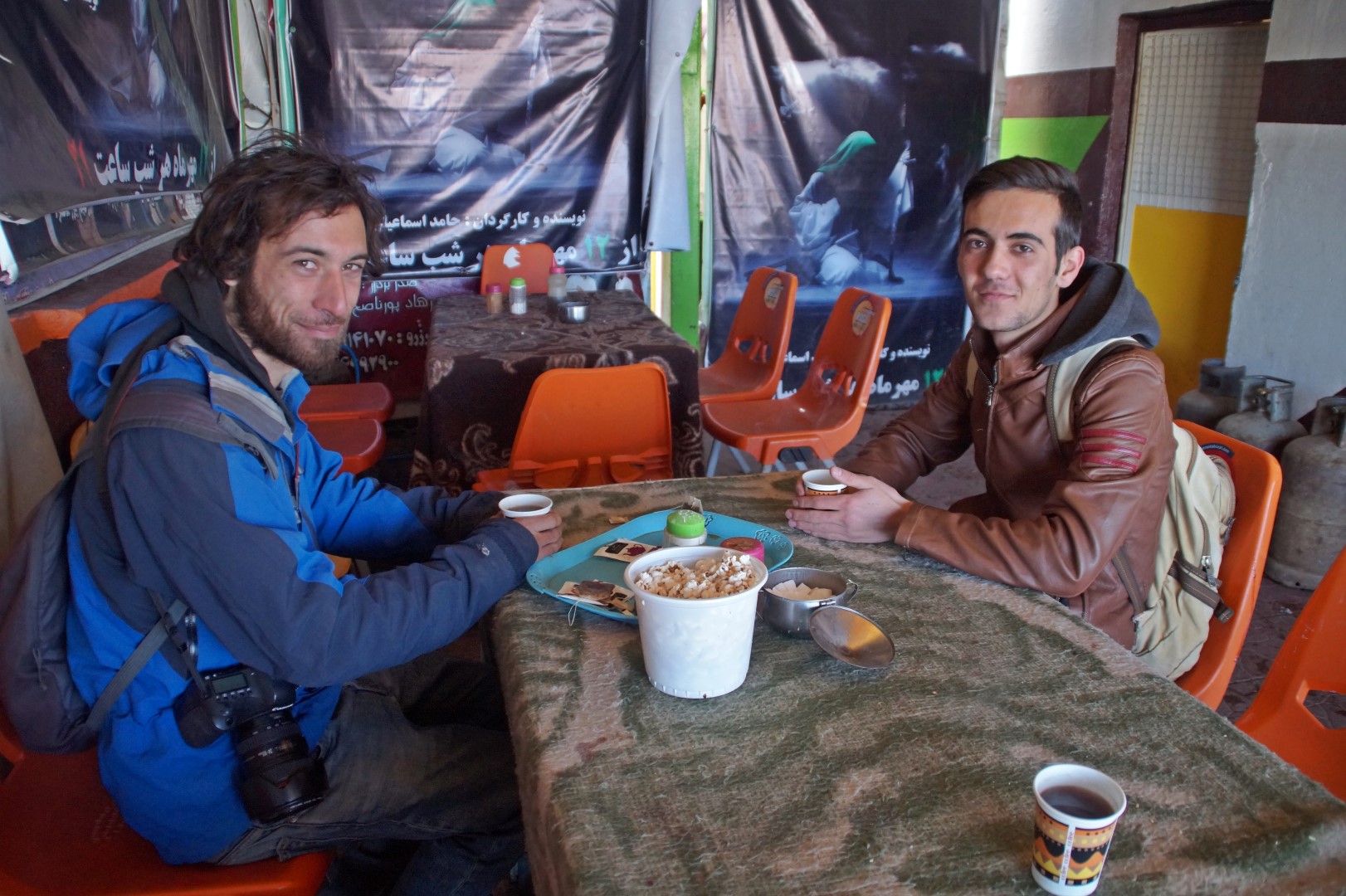

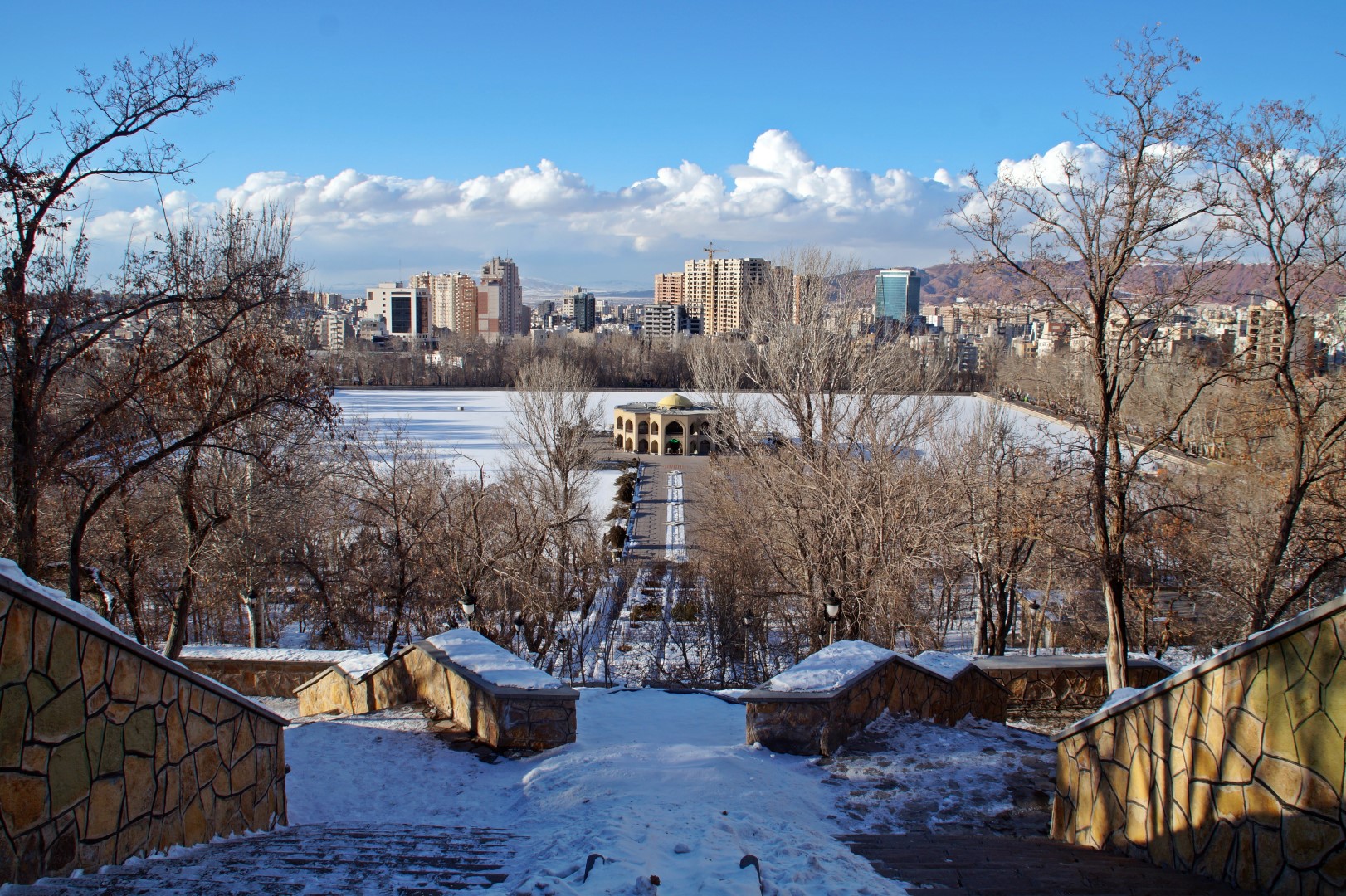
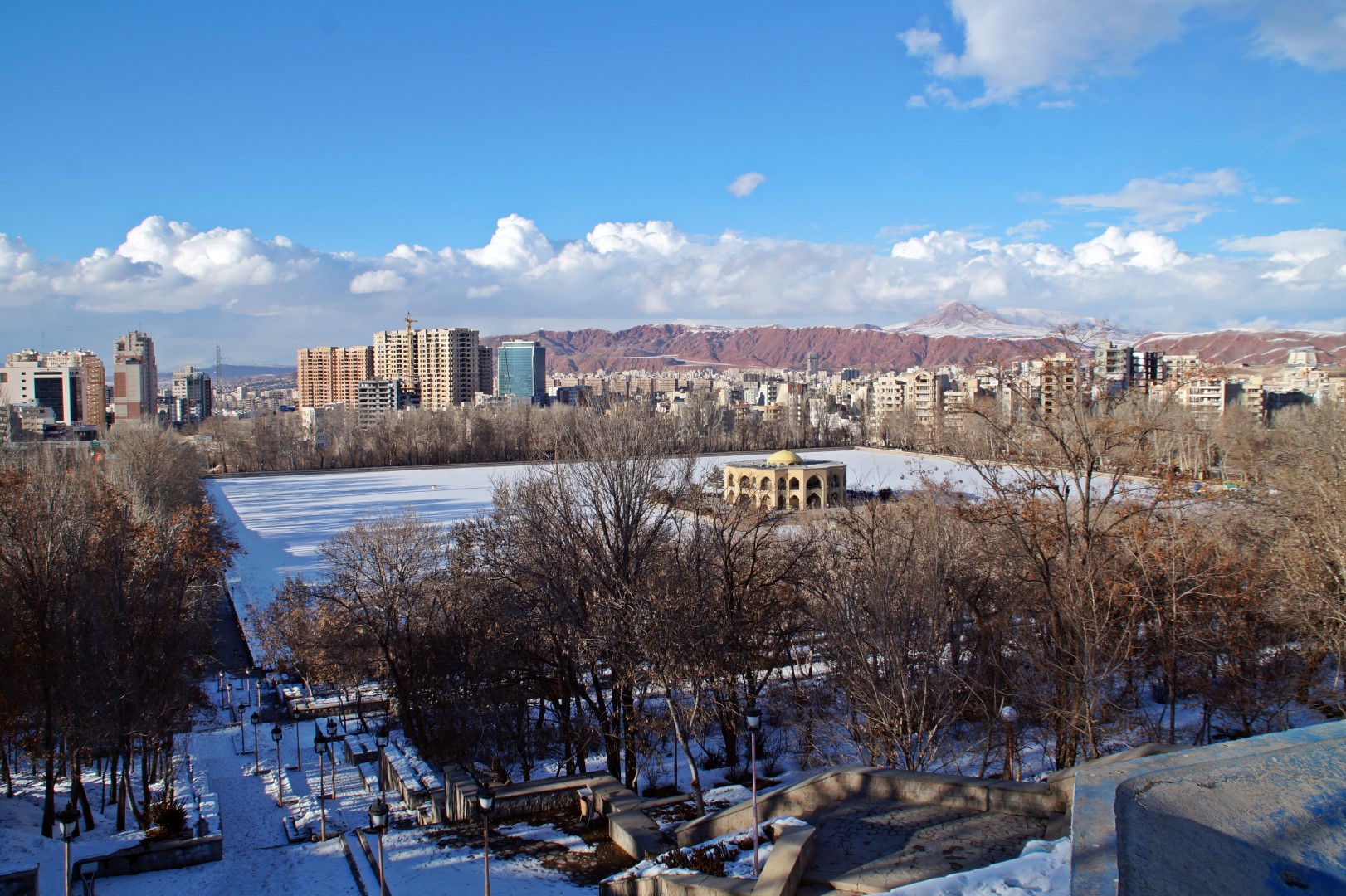
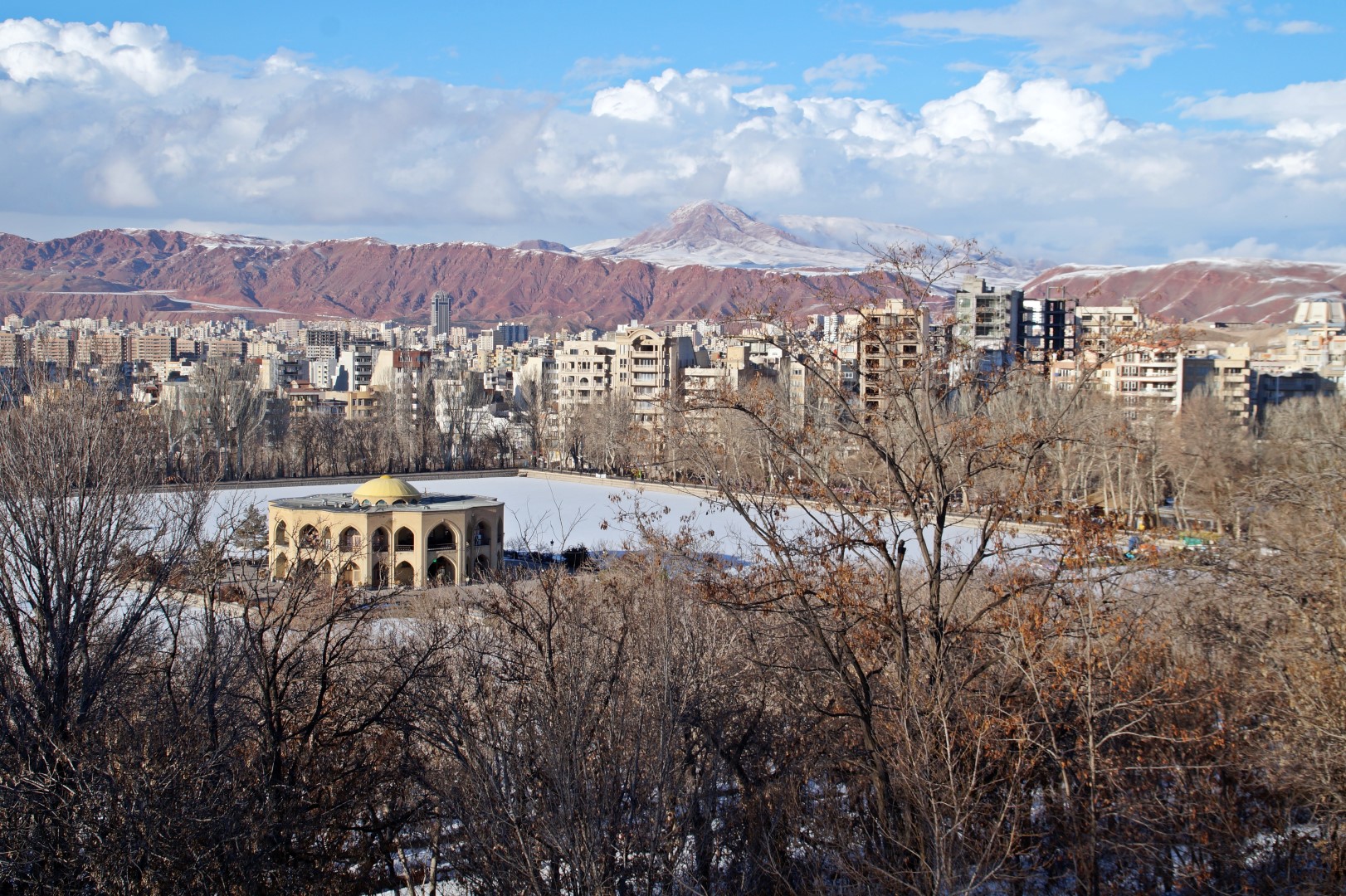
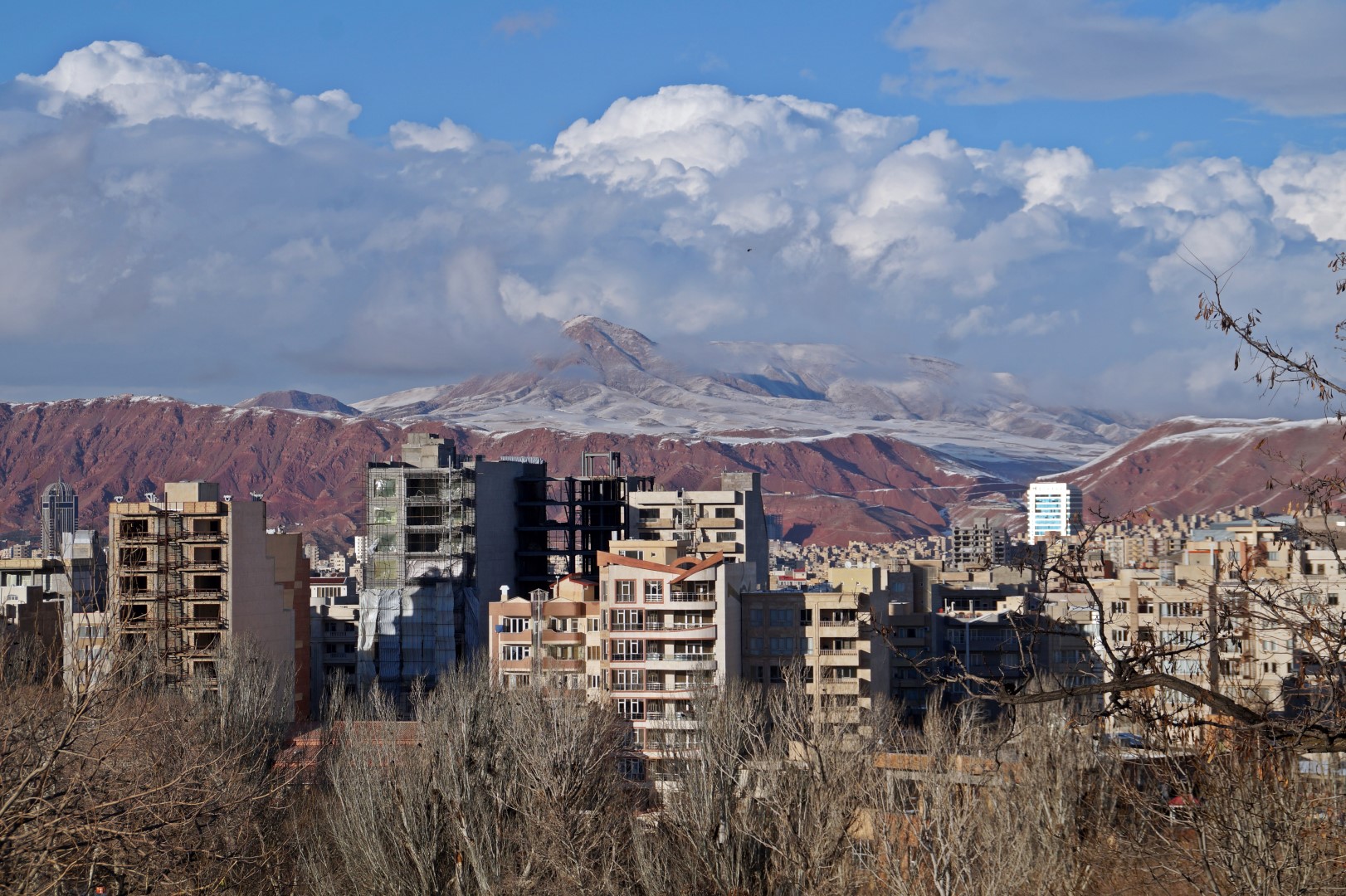
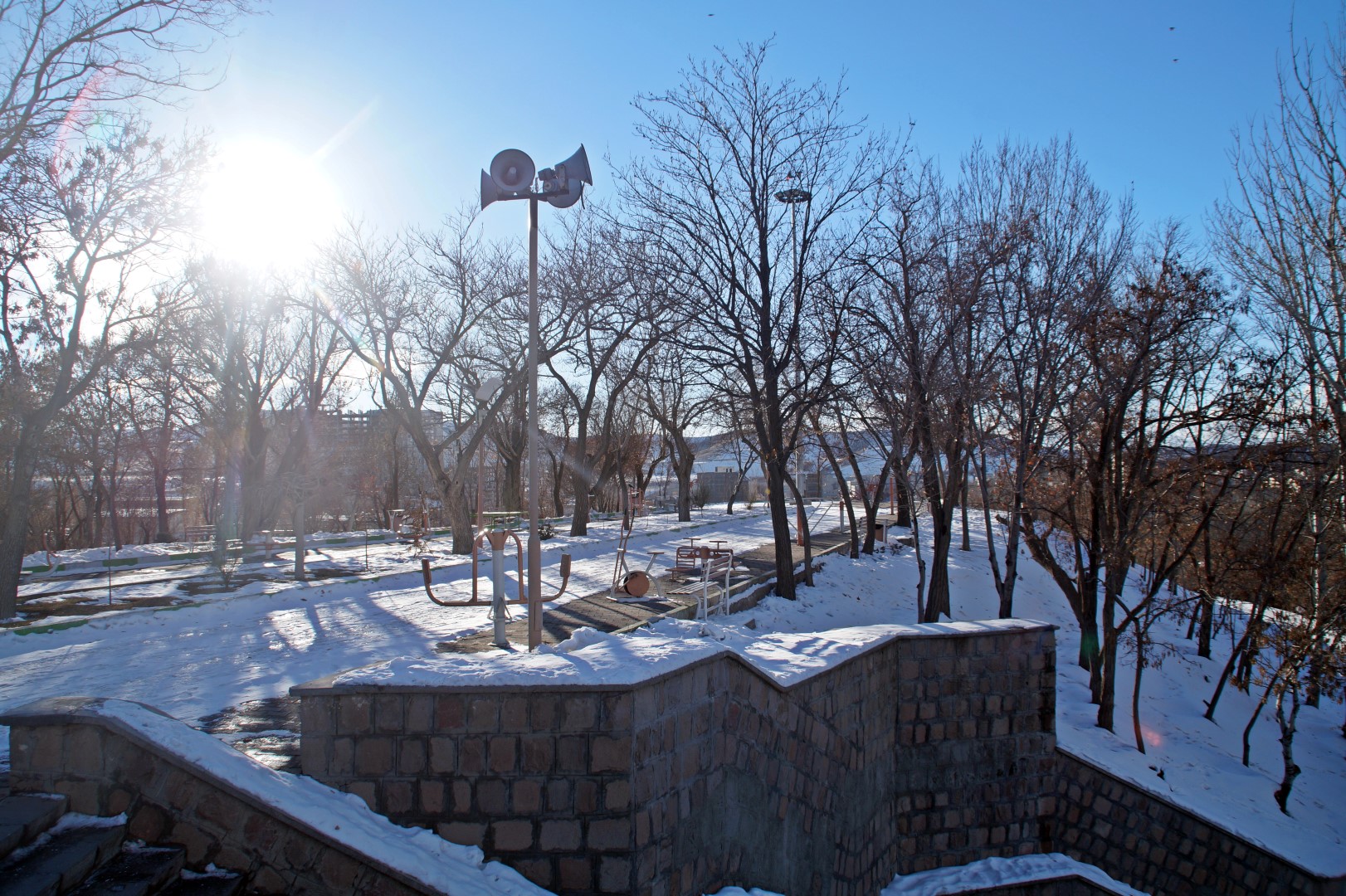
The origin of Pizza Cats
When we got back to the hotel room, we were surprised to see a cat sitting on my bed – but he quickly escaped out of the window and onto the roof of another building when he saw us! Just like the cat in Shah Goli, I fed this one pizza. I tried to lure him back in, but he was too afraid, unfortunately.
And this was when I decided to name all of the cats in Tabriz Pizza Cat (with different numbers, of course)! Genius, don’t you think?!
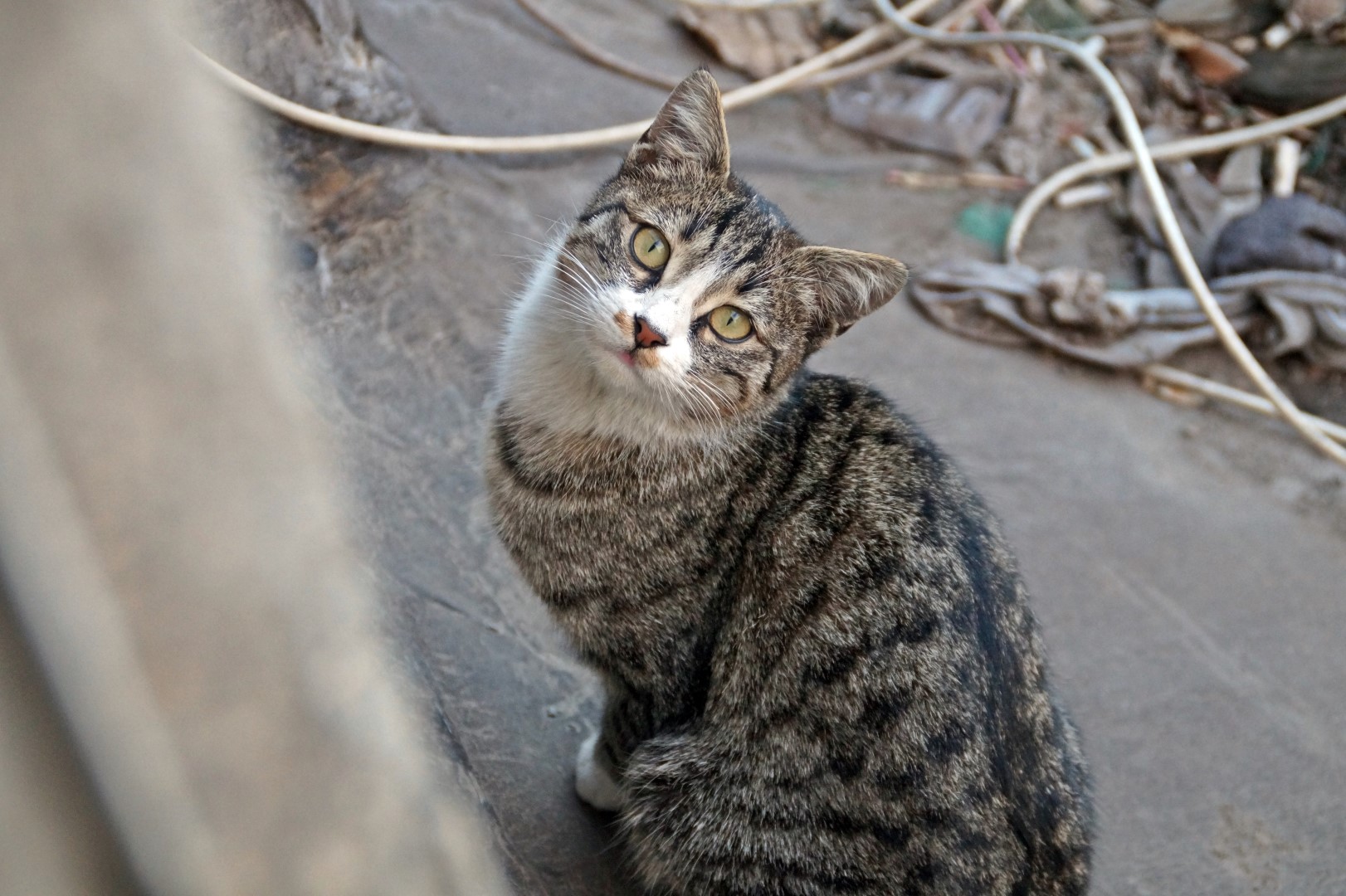
The last day in Tabriz was slow and we didn’t do much, but it was really enjoyable, especially since we were able to have long conversations with locals. Our time in Tabriz was generally not filled with much sightseeing, but instead we took the time to really feel the place and its unique culture.
Overall, I liked the northwest part of Iran much more than the rest of the country, although all places that we saw had a certain beauty and interesting sights to see. My guess is that I simply felt more at home in Tabriz because of the Northern European-like weather!
Travelling to Tabriz
- We caught a night bus from Shiraz, which took 20 hours and cost us 650,000 rial (20 USD) each. The bus was somewhat comfortable and the driver stopped for everyone to eat dinner at 9 PM.
- We stayed for three nights at the Delgosha Hotel and paid only 250,000 (7½ USD) each per night. We had a private room with a bathroom, which was convenient. There was no breakfast and the Wi-Fi was extremely slow. There are no shops nearby, but the hotel is located in the city center, close to the Arg of Tabriz.
- Entrance fees: The Blue Mosque costs 150,000 rial (4½ USD). The Jameh Mosque and the Arg of Tabriz are free.
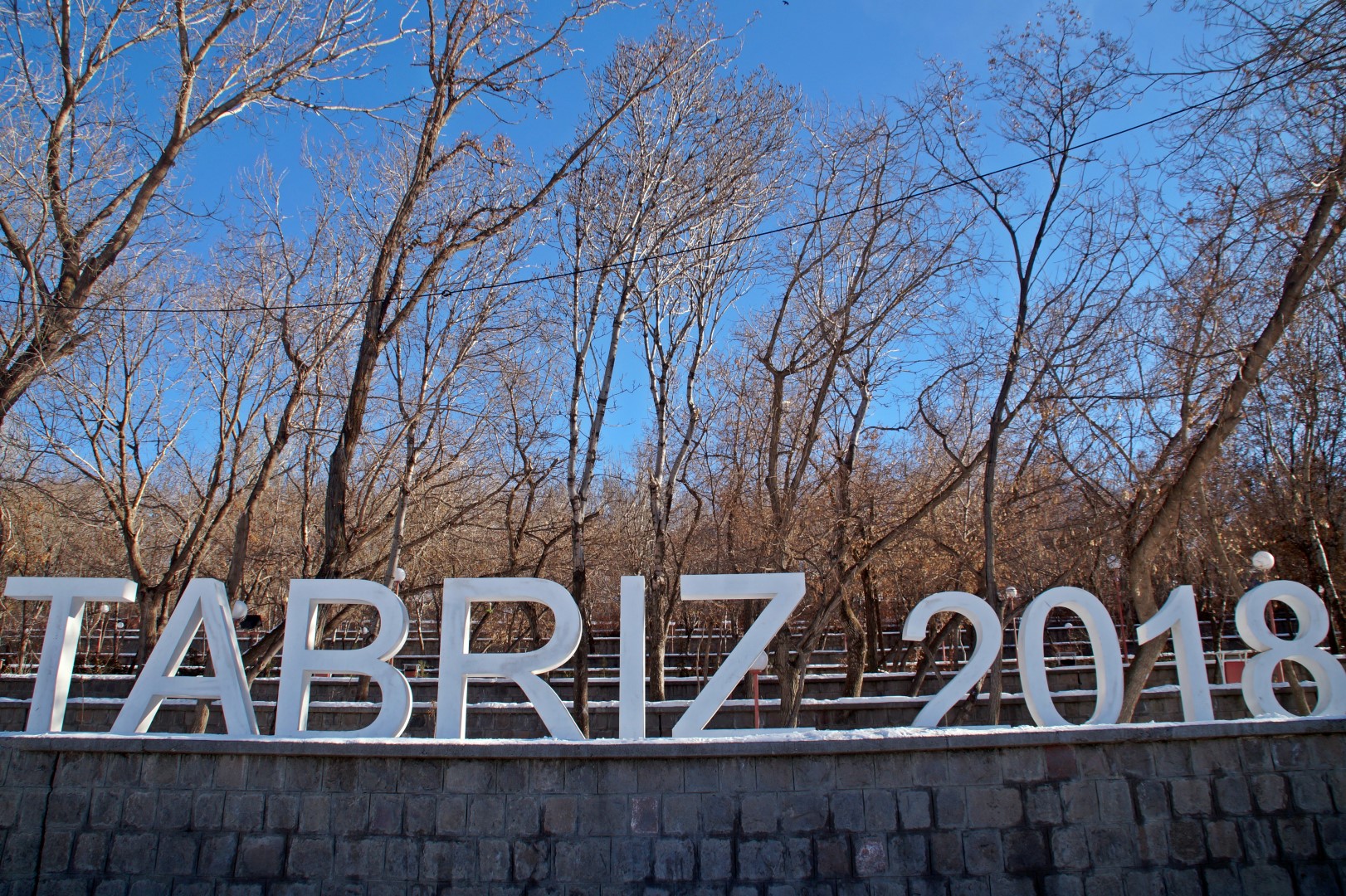
Off to Tabriz? Download a city guide for Tabriz with GPSmyCity here!
Leave a Comment
Trackback: Homepage on 25/02/2017

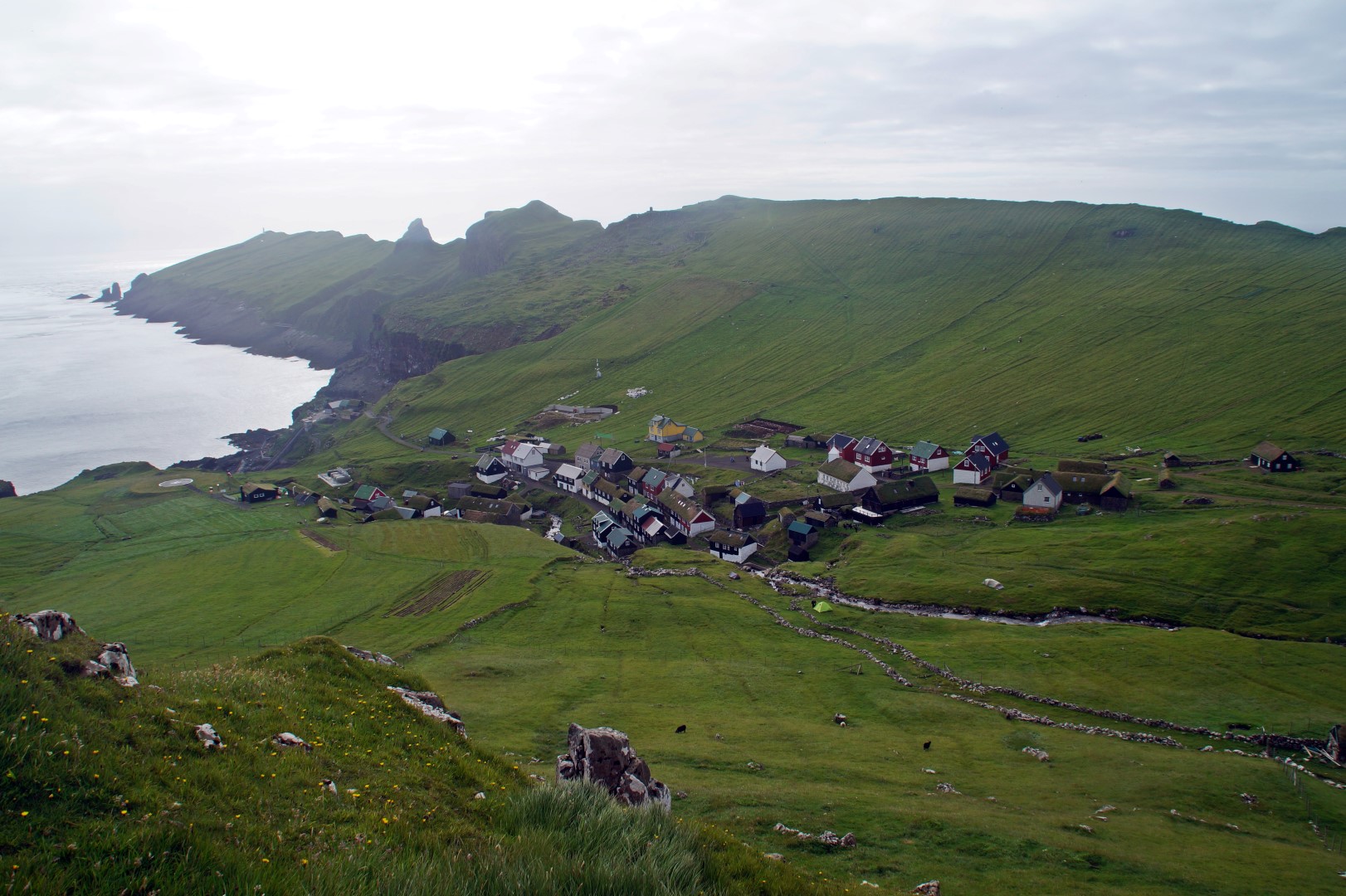
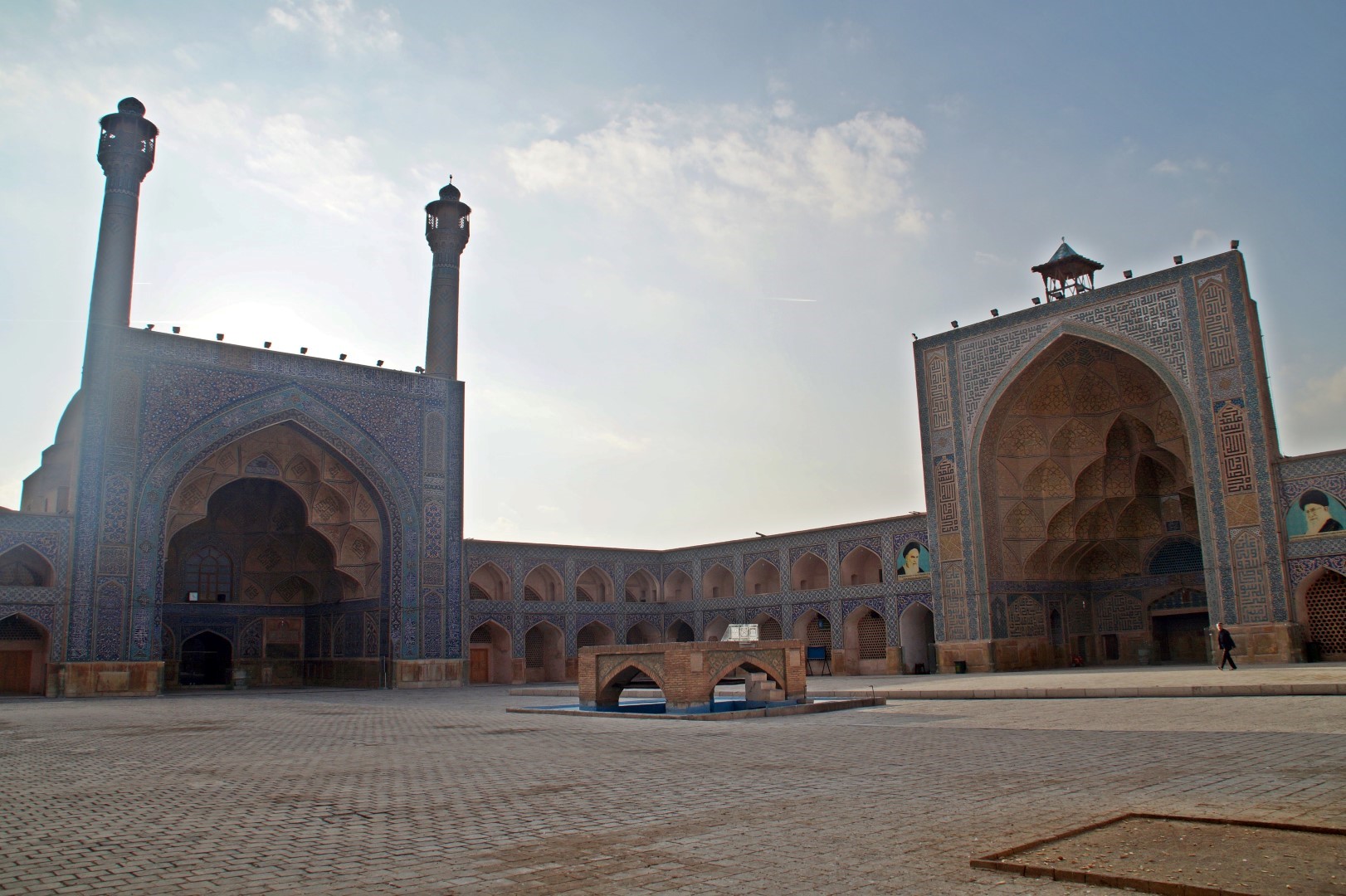
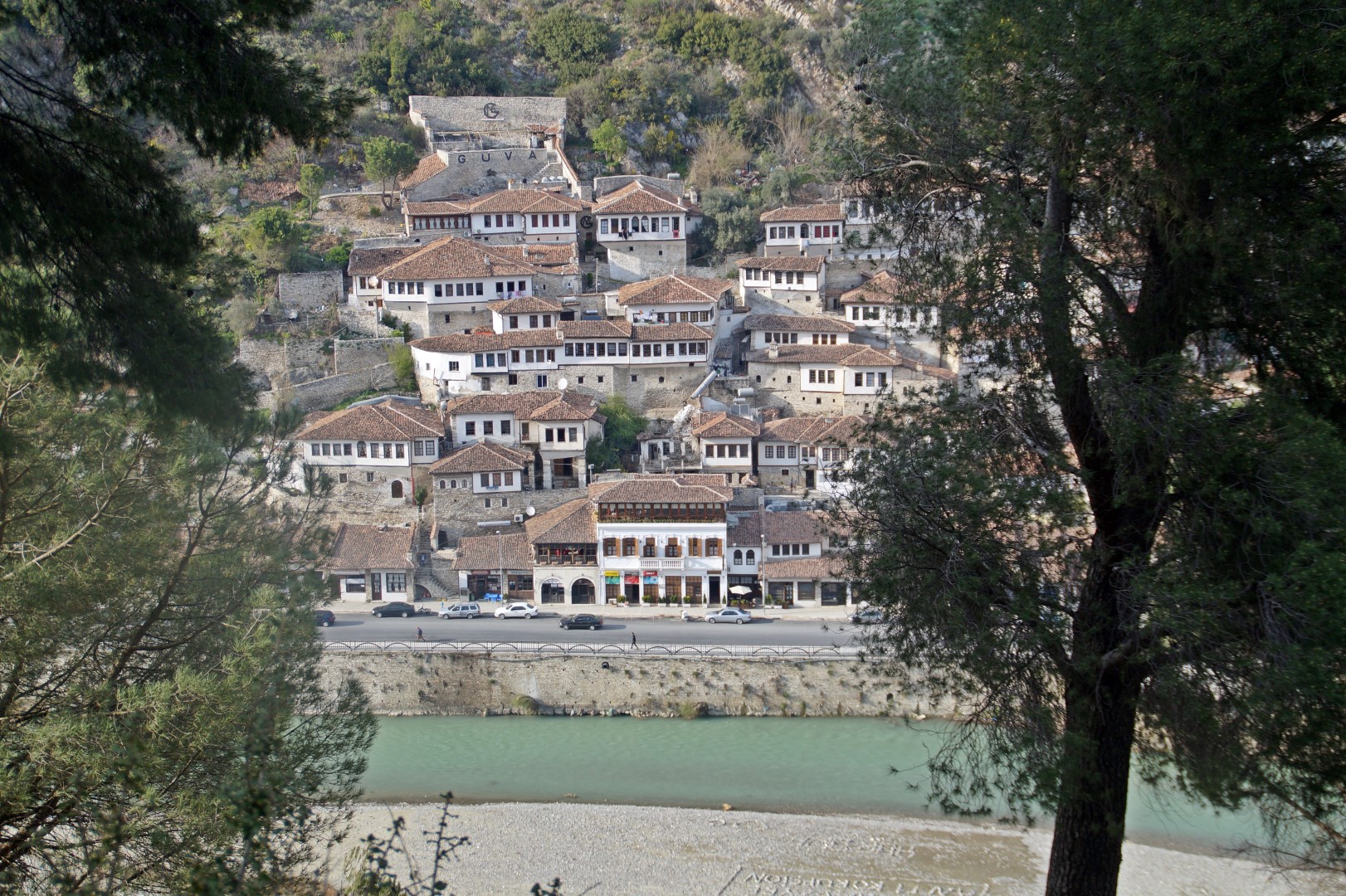

1 COMMENT